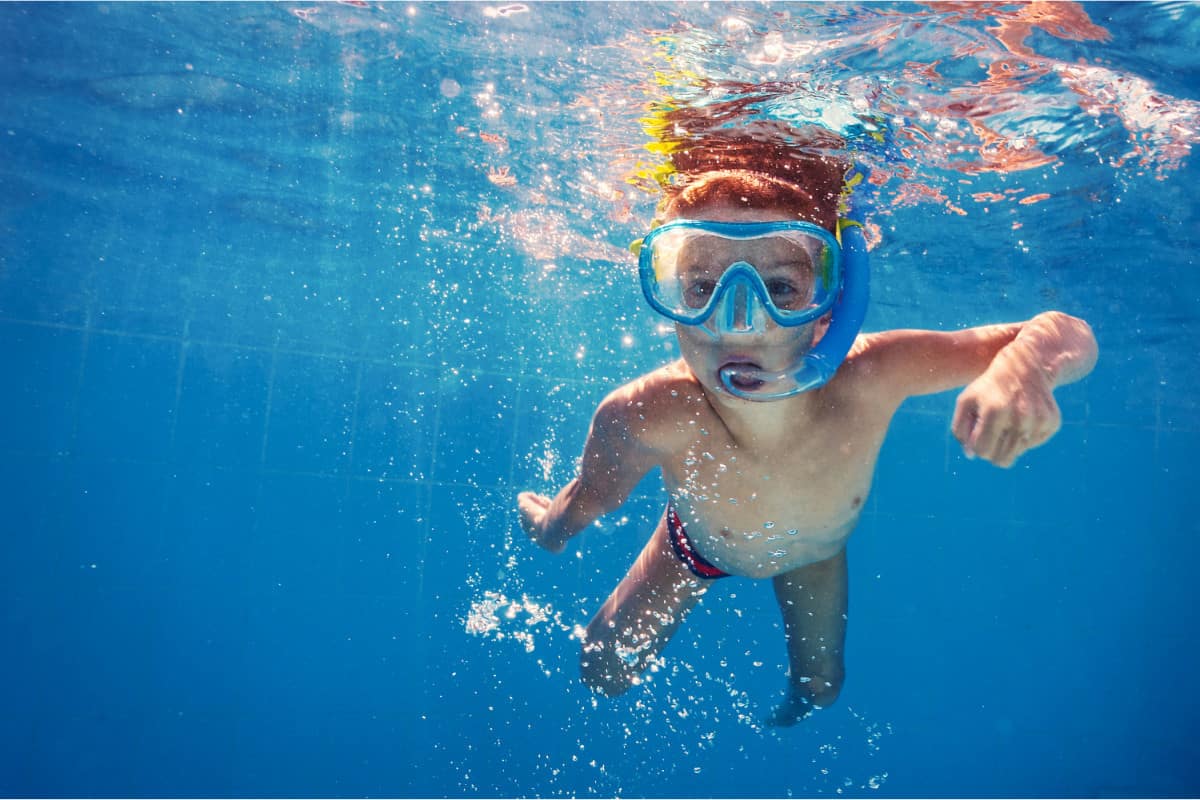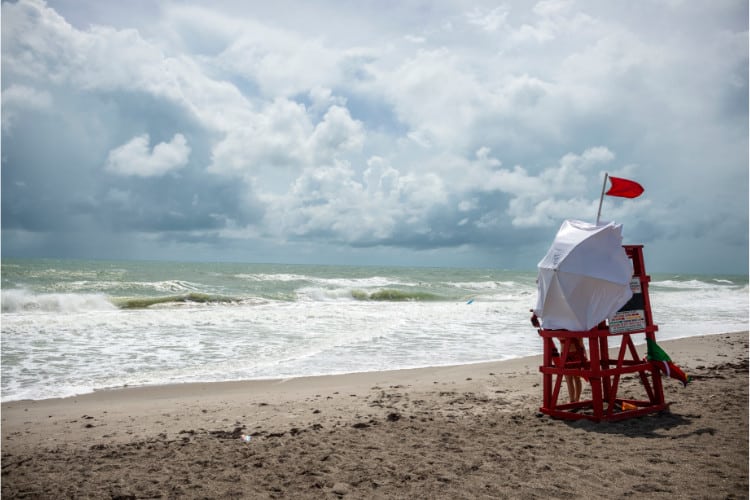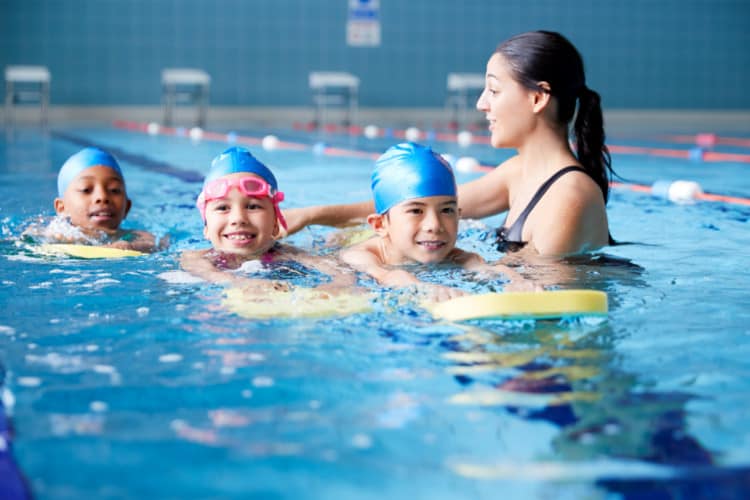Water Safety Tips to Enjoy the Summer

Spending time near a swimming pool, a natural body of water, or boating are fantastic ways to have fun as a family. However, if you have young children who are not yet swimmers, it can take some work to keep them safe. Here are ways to maximize water safety this summer!
Water Safety Matters
Even the most safety-conscious parents may find there is a moment or two when they are not supervising their children as closely as they should. Vacationing somewhere with a CPR-trained lifeguard is not a guarantee against drowning.
There is no need to panic or cancel your trip to the beach or skip visits to a home pool! Several water safety tips can help keep non-swimmers or new swimmers safe near any body of water.
Swimming lesson instructor Jessica Box, the founder of SoCal Survival Swim, shares her expert advice for water safety for kids in every age group. These tips can help keep young kids and older kids safe. These are important safety tips to keep in mind whether you are boating, have a backyard pool, are going to an ocean with a rip-current, or if you put a little one in the bathtub.
The Age Group Most Likely to Drown
Childhood drowning rates are staggering. Drowning is the number one cause of death for babies and younger children aged 1-4 because of a lack of adequate water safety. Children aged 12 to 36 months are at the highest risk of drowning. Developmentally, they are curious and lack the judgment or awareness of the dangers of water. Downing is the second cause of death for the age group, including preschoolers and younger teens aged 5-14. The American Academy of Pediatrics has stated, “Drowning can happen to anyone, and it can happen in seconds.” This is true whether you are at an aquatic fitness center or recreation center like the YMCA with excellent pool safety or at the beach. There is no such thing as a drown-proof body of water.

Water Safety Is Key
The reality is that no parent thinks their child will drown. The stigma around drowning is that it only happens to neglectful parents who don’t watch their kids while swimming. This stigma is the greatest threat to drowning prevention efforts. Yet, it happens every day, ripping families apart and snatching childhoods from innocent children.
In fact, of toddlers who drown, 69% do so when they are not even expected to be swimming. Somehow these little ones slip away unnoticed for seconds. Innocent babies and toddlers are losing their lives to toilets, buckets, bathtubs, fish ponds, fountains, pools, and lakes. Even drainage ditches and other places rainwater accumulates pose a hazard, even if the water depth is low. Toddlers and teens are the most at risk, with most teenagers drowning in natural water.
Water Safety Tips
Drowning prevention requires layers of prevention. These water safety rules are key to preventing drowning.
- First, four-sided fencing such as a pool fence is key for backyard pools. This is the safest and best way to keep little ones from accessing a backyard pool. Even kids with pools in their backyards may wander away and wind up in the pool even if they know they should not. The risk is magnified if you have a little one in your guest room who may not be familiar with water safety at all.
- Second, children in all age groups need to possess the ability to survive in water. Swimming lessons by a qualified swim instructor is the best way for children to obtain these skills. Survival swim lessons can teach even very young children skills like how to float.
- Third, a key element to water safety is to have designated adult supervision. This means that an adult should specifically be designated as the person in charge of watching specific children any time a child is near a pool or body of water. The designated adult needs to be able to respond quickly in an emergency. If a teenager or young adult is in charge, ensure they understand the seriousness of this responsibility. For times you will be near the water all day, be sure to rotate the designated supervisor.
- Finally, life jackets are necessary for natural water, even for strong swimmers. Consider having some air-filled personal flotation devices and extra life vests on hand if you have a backyard pool or go swimming frequently. If adults follow these water safety rules closely, drowning can be eradicated.

Consider Swim Lessons
The American Academy of Pediatrics recommends that parents and caregivers investigate options for swim lessons in their community. Before parents enroll a child in swimming lessons, they should make sure that the program meets their needs and the child’s needs.
Certified survival swim lessons are the highest quality and set the bar when it comes to drowning prevention. Survival swim lessons provide more experiential training, including swimming in clothes, what to do if you accidentally fall into a body of water, and practicing self-rescue. Swim lessons are not just for children. Parents who are not strong swimmers should learn to swim and learn water safety skills. There is evidence that swim lessons may reduce the risk of drowning, including in the high-risk one-to-four-year-old range. Breath-holding will not be enough to prevent drowning in most instances. Some swim instructors will consider your ability to pay and offer a sliding scale or free swimming lessons to families in need.
Be Vigilant About Water Safety
Drowning is a leading cause of injury-related death in children. In 2017, drowning claimed the lives of almost 1,000 US children younger than 20 years. Several strategies are available to prevent these tragedies. Drowning is silent and only takes a minute. No one wants drowning to be their child’s cause of death. No parent wants to see their child with brain damage or in a persistent vegetative state or see them floating face-down or underwater because they are not a good swimmer. Above all, remember that when it comes to water safety, there is no such thing as too safe.





